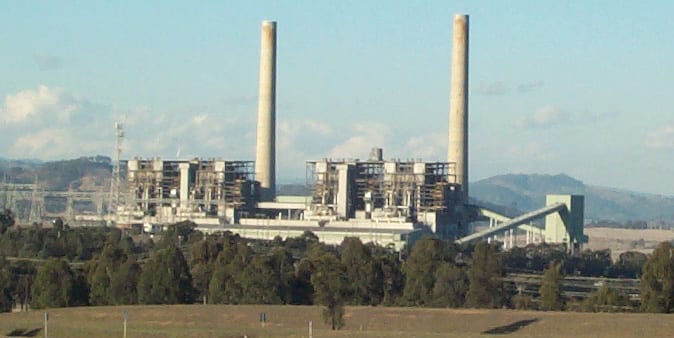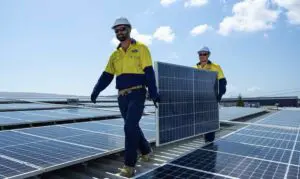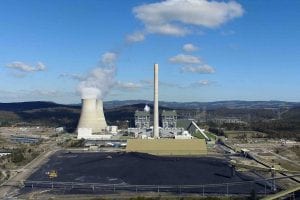
AGL has confirmed its plans to close the Liddell coal generator in NSW and replace it with 1.6GW of renewables, plus storage and other technologies – saying it was a smarter, cheaper, cleaner and more reliable option than keeping the ageing and unreliable coal plant open.
The decision by the board to ratify the plans enunciated by AGL boss Andrew Vesey earlier this year was expected, but it is still proving a difficult pill to swallow for the federal Coalition government, which is forced to declare an attachment to coal to please its right wing rump.
Two of those right wingers, Craig Kelly and Andrew Broad, both chairs of two key environment and energy committees, said on Sunday that AGL’s proposals wouldn’t work, and would cause blackouts because “there was not enough baseload.”
Former prime minister Tony Abbott joined in, telling radio 2GB on Monday that: “We need more baseload power. We need more reliable power. We’ve got far too much unreliable power coming into the system. This idea that batteries or even pumped hydro is going to solve all our problems is dead wrong.
“The only way we can have reliable baseload power is through coal and gas, particularly coal.”
But the AGL conclusions were unequivocal. The combination of wind and solar, plus battery storage or pumped hydro, and some peaking gas generators and demand response, was significantly cheaper than the “old coal” option.
AGL estimated it would have to invest $920 million to keep Liddell open another five years, pushing the cost of its output up to around $106/MWh.
This compares to just $83/MWh for the renewable-focused portfolio, including storage and some (expensive) gas speakers. That wholesale price also compares to an average cost of wholesale electricity in NSW in 2017 of around $100/MWh.
The company says it has already locked in 653MW of wind capacity – at a cost of $62/MWh – from the Cooper’s Gap and Silverton wind farms, and has signed contracts for 300MW of large-scale solar with Moaneng, including the 250MW Sunraysia solar farm near Balranald in NSW.
This solar farm will be augmented by the Midgar solar farm, also to be built by Maoneng, which built and operates the 13MW Mugga Lane solar farm in the ACT.
This solar capacity – tied in with an upgrade to the Bayswater coal generator, the installation of synchronous condensers at Liddell, and some demand response and a new gas peaking plant – would cost around $73/MWh.
Further investments in renewables – totalling 750MW, plus another gas peaking plant, 250MW of battery storage (or maybe pumped hydro) and more demand response – would also cost around $73/MWh.
But the fate of this latter (stage 2 and stage 3 – see table below) investment would depend on what others in the market may do, and therefore may depend heavily on the structure of the proposed National energy Guarantee, or whatever policy is put in place.
“This plan demonstrates that old power plants can be replaced with a mixture of new, cleaner technology, while improving reliability and affordability,” AGL chairman Graeme Hunt said in a statement.
“Decisions for the investments are staged to enable flexibility to respond to the changing needs of the market and improvements in technology over the next five years.”
The federal Coalition had sought to force AGL to either keep Liddell open, or sell it to a third party, as it hit the buttons marked “panic” and “expediency” at the height of the energy debate earlier this year.
The Australian Energy Market Operator, however, has made it clear that keeping old clunkers like Liddell open is not a preferred option, given that the key metric to keep the lights on is “dispatchable” generation, which means being relied on to produce a certain amount of power at a certain time.
The load-shedding and near blackout in NSW in early February – when two units of Liddell were offline, and the two biggest gas generators also tripped – highlighted the perils of relying on ageing equipment, particularly in the summer heat.
Energy minister Josh Frydenberg said the Coalition would seek the opinion of AEMO on AGL’s proposals, and expected to hear back in February.
“We are technology agnostic … our priority is reliability and affordability …. We look forward to AEMO’s advice in February,” Frydenberg told journalists on Sunday.
Meanwhile, Labor climate spokesman Mark Butler described the AGL decision as “a stunning rejection of Malcolm Turnbull’s coal policy,” and also drew attention to the defeat in Queensland of the LNP, which also supported the construction of new coal plants.
“Malcolm Turnbull has spent this year beholden to the hard right wing of the Liberal Party in trying to map out a coal-fired future for Australia, when the Australian community, the electricity industry, and investors know that the future for Australia’s energy sector lies in renewables, not propping up old, unreliable coal power at enormous cost to consumers,” Butler told journalists in Adelaide.
Butler was asked by a (ABC radio) journalist:
“You might not like the type of power it is or the consequences it causes, but is that really small fire when the lights go out and the air-conditioning is off in the middle of summer?”
To which he responded: “I don’t think that reflects the reality of what is happening in New South Wales and Victoria with very old coal-fired power stations becoming increasingly unreliable with unscheduled outages.”
Greens climate spokesman Adam Bandt also described the AGL decision as a “slap in the face” for Turnbull, although the Greens predicted that the price trajectory of renewables and storage might mean that the “stage two” gas speakers may not be built.
Indeed, much of the stage 2 and stage 3 developments will be heavily dependent on what is decided on the national policy level, what is decided in state policy, a final decision of Snowy Hydro 2, and what other players in the market are up to.
This will also be influenced by policy reflections on the level of competition in the market.
A report by the Australian Energy Regulator last week highlighted how the four big players in NSW – AGL, Origin, EnergyAustralia and Snowy Hydro – jacked up their prices almost three-fold earlier this year following the closure of the Hazelwood brown coal generator in Victoria.
The Institute for Sustainable Futures, however, said that if energy efficiency measures were promoted, the cost would be less than one half of that of keeping Liddell open, but it lamented there were no incentives for utilities like AGL to act this way.
AGL also made it clear that Liddell would not be sold, saying it is currently needed to supply customers. Its land and equipment will be repurposed, and any sale to a third party would require duplication of infrastructure it currently shares with Bayswater.
AGL bought Liddell and Bayswater from the NSW government in 2014, but AGL said at the time that the effective cost of Liddell was zero, after taking into account the value of the younger Bayswater generator and coal stockpiles and supplies.
AGL said its proposed renewables-based portfolio to replace Liddell would shrink its carbon footprint by 17.6 per cent. It intends to operate Bayswater for at least another decade beyond Liddell, and the Loy Yang A brown coal generator until 2048.









